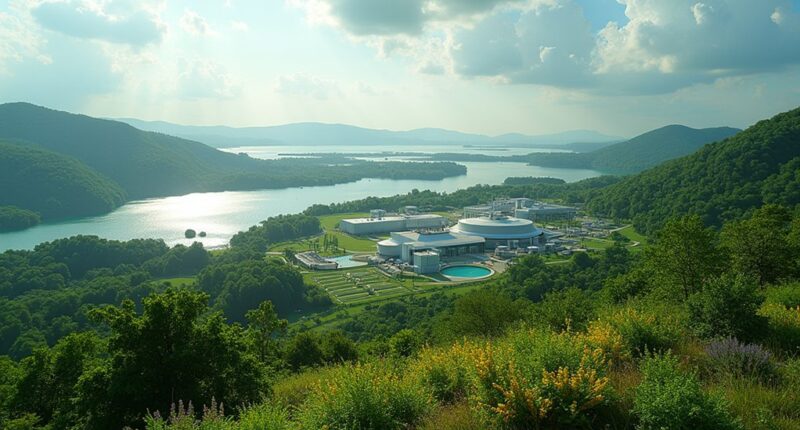Climeworks has hit a major milestone, raising $162 million to boost its direct air capture technology, which helps suck CO₂ directly from the atmosphere—think of it as Earth’s very own vacuum cleaner for bad air. Meanwhile, the EU is launching nature credits, aiming to mend a €37 billion biodiversity gap, blending carbon and biodiversity credits into one neat package. Together, these efforts not only tackle climate change but also support our planet’s diverse ecosystems. Curious about how these initiatives intertwine?
Quick Overview
- Climeworks secured $162 million in funding, emphasizing investor confidence in direct air capture technology for carbon removal.
- The direct air capture market is expected to grow significantly, moving towards essential technology for climate solutions.
- Climeworks’ technology captures CO₂ directly from the air, aiding hard-to-abate sectors while promoting sustainability.
- The EU’s expansion of nature credits aims to address a €37 billion biodiversity funding gap through innovative environmental solutions.
- Hybrid crediting schemes combine carbon and biodiversity credits, supporting local economies and enhancing ecosystem health.
Climeworks’ Milestone Fundraising and Market Position
In a remarkable leap for both Climeworks and the carbon removal industry, the company recently bagged a staggering $162 million in its latest funding round—think of it as a financial boost equivalent to finding a hidden stash of snacks during a long road trip.
This injection pushed their total equity funding past $1 billion, a landmark for carbon removal. Climeworks’ total funding surpassing USD 1 billion solidifies their industry leadership and demonstrates the confidence investors have in their technology and mission.
With plans to scale up direct air capture (DAC) technology, Climeworks is shifting DAC from “experiment to essential.” Direct air capture market size is expected to grow significantly, reflecting the increasing demand for innovative solutions to combat climate change.
Their leadership shines through with the world’s largest DAC facility, proving they’re not just trailblazers but also essential players in combating climate change. Climeworks’ success exemplifies how carbon capture technologies are becoming critical components in corporate strategies to achieve ambitious net-zero emissions targets.
The Role of Direct Air Capture in Climate Solutions
Direct air capture (DAC) is rapidly gaining attention as a pivotal player in the quest for climate solutions, much like how a reliable umbrella becomes indispensable during an unexpected downpour. This innovative technology captures CO₂ directly from the air, tackling emissions from hard-to-abate sectors like aviation. Direct Air Capture relies on renewable energy, energy-from-waste, or waste heat as energy sources, enhancing its sustainability. As a response to climate change, DAC is expected to be required at a billion-tonne scale by mid-century to balance residual emissions and reduce CO₂ concentrations.
While it won’t replace forest conservation, DAC complements natural carbon sinks, helping to balance our carbon budget. Unlike traditional methods, DAC represents one of several innovative approaches to carbon capture and storage that can be implemented alongside forest management strategies. Its modular design allows for easy scaling, meaning DAC can be deployed where it’s most effective. With growing investments and technological advancements, DAC stands as a hopeful ally in the fight against climate change—rain or shine.
The Intersection of Carbon Removal and Biodiversity Credits
How can the quest for carbon removal and biodiversity improvement go hand in hand? Imagine a world where planting trees not only captures carbon but also nurtures wildlife. Hybrid crediting schemes are emerging, blending carbon and biodiversity credits into single, tradable units. This means one investment can tackle two big environmental challenges—like hitting two birds with one eco-friendly stone. Nature-based solutions, such as restoring mangroves, offer a buffet of benefits, supporting local economies while improving ecosystems. Yet, the road isn’t without bumps; ensuring robust verification is essential to avoid “greenwashing” and maintain integrity in this intertwined landscape. Nature-based removals provide co-benefits like biodiversity protection, making them a valuable part of climate strategies. Furthermore, these solutions represent roughly 99% of removal credits, highlighting their significant role in the carbon market. Effective habitat protection remains a cornerstone strategy for preserving ecosystem services while simultaneously enhancing carbon sequestration potential.









